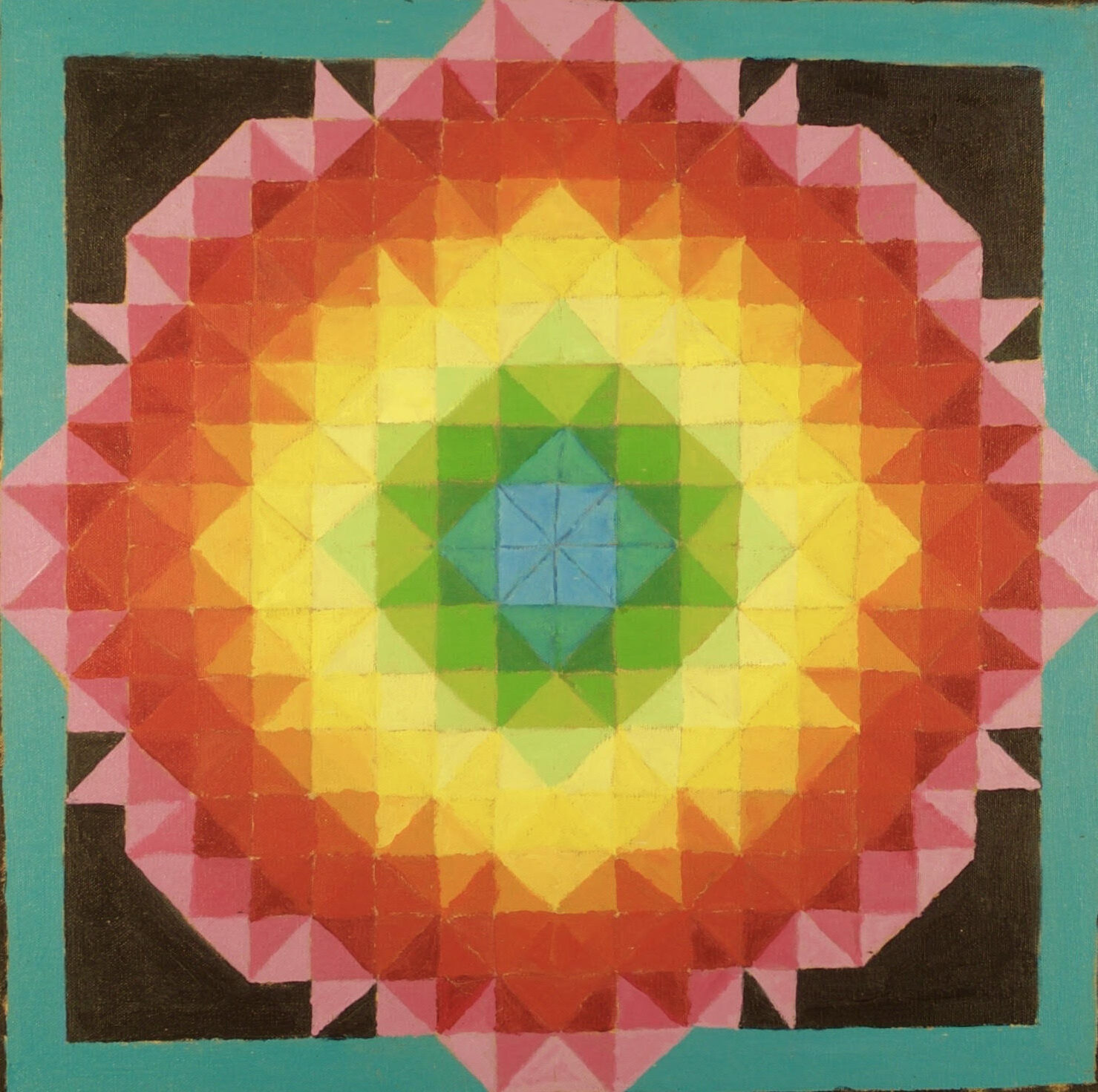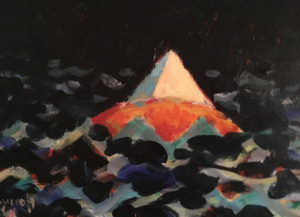This is a continuation of the Creation of Atum. In the Pyramid Texts (more of them later) the substance of Atum is connected with the primeval mound (bn bn) and pyramids. In Chapter 175 of The Book of The Dead, we see the cyclic universe at work where Atum destroys all that he has made and unseen, returns to the primordial waters of chaos in the form of a serpent.
Atum is said to dwell inside the primeval mound, a pyramid. In modern understanding, the inside of spin particles contain quarks. Interesting connection. And, Atum’s self creating the universe into existence has also been interpreted as ‘having union with his shadow (the shadow is one of the five aspects of a man. Next we will look at the Egyptian conception of the Sun (Re or Ra) and its role in the Cyclic Universe.
The Primeval Mound – BenBen
The Primeval mound (bn bn or Benben) was another feature of creation. As a result of Atum’s developments a mound arose from the primordial waters. This is where Atum settled. In the Pyramid Texts, Atum himself is refered to as “mound”. This mound turned into a small pyramid, located in Heliopolis, which is the place Atum was said to dwell within.
Pyramid Text: Utterance 600
A prayer for the king and his pyramid
O Atum-Khoprer, you became high on the height, you rose up as the bnbn-stone in the Mansion of the ‘Phoenix’ in On, you spat out Shu, you expectorated Tefenut, and you set your arms about them as the arms of a ka symbol, that your essence might be in them. O Atum, set your arms about the King, about this construction, and about this pyramid as the arms of a ka-symbol, that the King’s essence may be in it, enduring for ever.
……translated by R.O. Faulkner
Atum’s name is thought to be derived from the word ‘tem’ which means to complete or finish. Thus he has been interpreted as being the ‘complete one’ and also the finisher of the world. As creator he was seen as the underlying substance of the world, the deities and all things being made of his flesh or alternatively being his ka. Sometimes he also is shown as a serpent, the form which he returns to at the end of the creative cycle when he returns to the watery chaos.
Chapter 175 of the Book of The Dead
Chapter for not dying again
ATUM: You shall be for millions on millions of years, a lifetime of millions of years. I will dispatch the Elders and destroy all that I have made; the earth shall return to the Primordial Water, to the surging flood, as in its original state. But I will remain with Osiris, I will transform myself into something else, namely a serpent, without men knowing or the gods seeing. How good is what I have done for Osiris, even more than for all the gods! I have given him the desert, and his son Horus is the heir on his throne which is in the Island of Fire; I have made what appertains to his place in the Bark of Millions of Years, and Horus is firm on his throne in order to found his establishments
.…..From The Book of the Dead, translated by R.O. Faulkner


FURTHER INFORMATION:
Benben – Wikipedia
The Ancient Egyptian Ka – the ka is one of the 5 aspects of a man, check the dictionary “ka” for this one!
Pyramid Texts –Egypt: Sakkara (Saqqara), history of ancient Egypt near Cairo, Egypt
Heliopolis (ancient Egypt) – Wikipedia
The symbolism of the serpent in antiquity, especially Angkor Wat in Cambodia: Serpent (symbolism) – Wikipedia
Images for Angkor Wat Angkor wat – Google Search
Angkor Wat was built from the 7th to the 12th century AD! Angkor Wat – Wikipedia
NOTES:
Egyptian pantheon – Wikipedia
The Egyptian Creation Myth, The Birth Of The Earth
Tomb of Ramses IV
Ramesses IV – Wikipedia
The Cyclic Universe:
In the story of Atum we see how eternity works. Creation takes place after the Inundation, the flood, when new mounds are created out of the chaotic waters of Nun. After an extended length of time the earth returns to the Primordial Water, the surging flood and Atum, hidden, turns himself into a serpent.
Also from antiquity is the story of the Phoenix that rises from the ashes. The Ouroborus is the mythological story of the snake eating its own tail, another icon of eternity. Angkor Wat in Cambodia is about the cosmic serpent. It is more than unusual that so many ancient cultures built pyramids.







